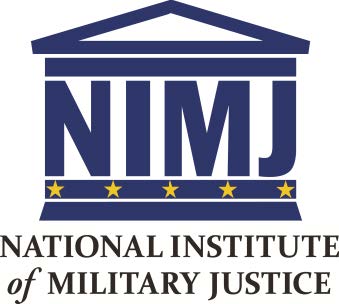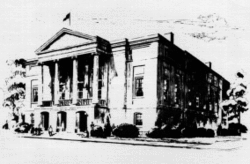|
No. 24-0144/NA. U.S. v. Salvador Jacinto. CCA 201800325. On consideration of the petition for grant of review of the decision of the United States Navy-Marine Corps Court of Criminal Appeals, it is ordered that said petition is granted on the following issues: I. DID THE LOWER COURT FAIL TO COMPLY WITH THIS COURT'S REMAND ORDER? II. DID APPELLANT SUFFER PREJUDICE FROM THE MILITARY JUDGE'S ERRONEOUS CONTINUANCE DENIAL? No. 24-0124/NA. United States, Appellee/Cross-Appellant v. Jeremy W. Harborth, Appellant/Cross-Appellee. CCA 202200157. On consideration of Appellant/Cross-Appellee's petition for grant of review of the decision of the United States Navy-Marine Corps Court of Criminal Appeals, and the Judge Advocate General's Certificate for Review, it is ordered that said petition is granted on the following issue:
WAS THE TRIAL DEFENSE COUNSEL INEFFECTIVE BY NOT SEEKING SUPPRESSION OF ALL EVIDENCE DERIVED FROM THE UNLAWFUL SEIZURE OF CHIEF HARBORTH'S PROPERTY? "CHARLOTTESVILLE, Va. – A former Army officer and attorney assigned to the United States Army Judge Advocate General’s Legal Center and School (JAG School) in Charlottesville pled guilty today to multiple federal charges related to his destruction of U.S. Army property and subsequent false statements to federal investigators.
Manfredo Martin-Michael Madrigal, III, 38, a former resident of Charlottesville, Va., pled guilty today to one count of destruction of U.S. Army materials and three counts of making a false statement. According to court documents, in February 2022, Madrigal was assigned to a staff position at the JAG School in the Training Developments Directorate, whose mission was to design and develop training products for the JAG Corps and the Army. Madrigal possessed an active security clearance and previously served overseas on sensitive operations. In early 2022, Madrigal was under investigation by the U.S. Army and the JAG School for failing to report a previous conviction for driving under the influence (DUI). While his Army investigation was pending, Madrigal deleted, without authorization, online JAG training materials and filmed himself doing so while graphically describing his ill-will towards the Army. The FBI’s investigation also revealed that Madrigal made a phone call to the Russian embassy in Washington, DC the same night that he deleted the training materials and then texted a witness that Russia wanted to know what he knew. On February 22, 2022, Madrigal was discharged from the JAG School and claimed in his exit paperwork that he had no unreported contact with a foreign national. In April and May 2022, Madrigal was interviewed by the FBI about his actions. In these interviews, Madrigal made multiple false statements regarding his actions, including denying any involvement in the deletion of materials and that he only learned of the deletion from a coworker, as well as falsely denying his contact with a foreign national at the Embassy. United States Attorney Christopher R. Kavanaugh of the Western District of Virginia and Stanley M. Meador, Special Agent in Charge of the FBI’s Richmond Division, made the announcement. The Federal Bureau of Investigation, U.S. Army Counterintelligence Command, and the United States Army investigated the case. Special Assistant U.S. Attorney Jessica Joyce and Assistant U.S. Attorneys Katie Burroughs Medearis, Vito A. Iaia, and Sean M. Welsh and are prosecuting the case for the United States. Updated July 24, 2024" Your browser does not support viewing this document. Click here to download the document. NIMJ is excited to announce it is accepting nominations for three annual awards, each carrying a cash prize.
First, the Rear Admiral John S. Jenkins Writing Award is presented to the best nominated paper written by a law student in 2023 or 2024 on a military legal topic. The award is named for Rear Admiral John S. Jenkins, the 28th Judge Advocate General of the Navy and co-founder of NIMJ. The award carries a $250 prize. Second, the Kevin J. Barry Writing Award for Excellence for Practitioners and Scholars honors an outstanding scholarly article on a military legal topic written in 2023 or 2024 by an academic or practitioner. The award is named for Captain Kevin Barry, USCG, who was a co-founder and longtime director of NIMJ. The award carries a $250 prize. Third, the Dr. Evan R. Seamone Memorial Veterans' Excellence Award honors excellence in the field of veterans' rights demonstrated through a scholarly article, major litigation, or substantial advocacy work. The award carries a $250 cash prize. Nominations and submissions should be sent to NIMJ ([email protected]) by August 30, 2024. Self-nominations are allowed. For more information about these three awards, please visit https://lnkd.in/gjqaqDJw. Award winners will be honored at NIMJ's Fall 2024 conference. Your browser does not support viewing this document. Click here to download the document. Your browser does not support viewing this document. Click here to download the document. "The answer to the SEAL Team 6 hypothetical is actually not that difficult. Under the Uniform Code of Military Justice and the Manual for Courts-Martial, there is no legal consequence or impact on an individual service member’s duty to obey lawful orders and disobey unlawful orders. Presidential immunity does not transfigure an unlawful act into one that must be obeyed upon penalty of court-martial."
https://www.lawfaremedia.org/article/can-the-military-disobey-orders-in-the-seal-team-6-hypothetical |
Disclaimer: Posts are the authors' personal opinions and do not reflect the position of any organization or government agency.
Co-editors:
Phil Cave Brenner Fissell Links
SCOTUS CAAF -Daily Journal -2024 Ops ACCA AFCCA CGCCA NMCCA JRAP JRTP UCMJ Amendments to UCMJ Since 1950 (2024 ed.) Amendments to RCM Since 1984 (2024 ed.) Amendments to MRE Since 1984 (2024 ed.) MCM 2024 MCM 2023 MCM 2019 MCM 2016 MCM 2012 MCM 1995 UMCJ History Global Reform Army Lawyer JAG Reporter Army Crim. L. Deskbook J. App. Prac. & Pro. CAAFlog 1.0 CAAFlog 2.0 Archives
July 2024
Categories
All
|



 RSS Feed
RSS Feed